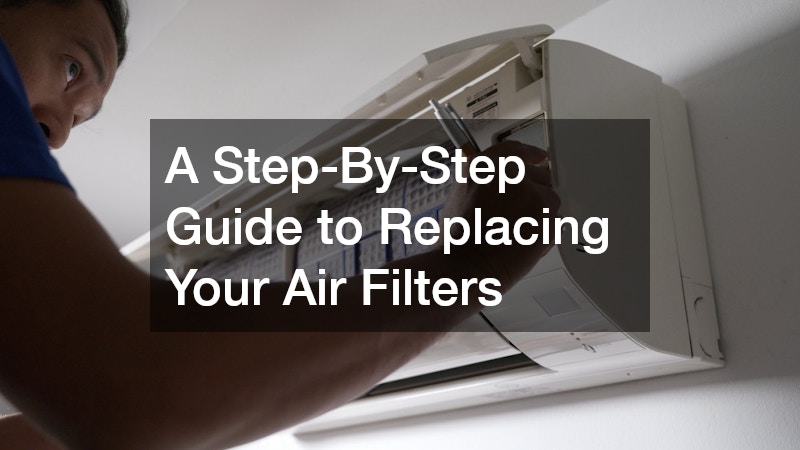Maintaining your HVAC system is essential for ensuring efficient operation and clean indoor air. One of the easiest and most crucial maintenance tasks is regularly replacing your HVAC air filters. This guide will walk you through the steps of replacing your air filters to keep your system running smoothly.
Deciding When to Replace
Understanding the frequency of air filter replacement is key to maintaining a healthy HVAC system. Several factors influence how often you should change your air filters, including the type of filter you have installed. Certain filters are designed to last longer than others, while the environment and specific conditions within your home also play a pivotal role.
If you live in a household with pets or individuals with allergies, you may need to replace your filters more frequently. Dust, dander, and other pollutants can clog your air filters faster in such scenarios. Additionally, during changes of the season when heating or cooling systems are in high demand, consider checking and possibly replacing your filters more often.
It is generally recommended to check your air filters monthly, but you only need to replace them depending on the factors mentioned above. Keeping track of your filter’s condition will ensure optimal performance of your HVAC system and maintain better air quality within your home.
Choosing an Air Filter
Choosing the right air filter can significantly impact the performance of your HVAC system and the quality of the air in your home. There are several types of HVAC air filters available, each varying in effectiveness and material. HEPA filters, for instance, are known for capturing the smallest particles, making them ideal for allergy sufferers.
Another option, pleated filters, tends to have a larger surface area and thus traps more dirt and debris compared to flat filters. It’s crucial to compare the MERV (Minimum Efficiency Reporting Value) ratings, as a higher MERV rating indicates better filtration capabilities. Consider your household needs when selecting the type of filter that suits you best.
In addition to standard air filters, you may also encounter options like electrostatic filters, carbon filters, and washable filters. Each has unique benefits, so understanding your specific air quality requirements is essential in making an informed decision that balances cost and efficiency.
Locating the Air Filter
Finding the location of your air filter can sometimes be a challenge, especially if you’re unfamiliar with your HVAC system. Air filters are typically located in one of several common areas: the air handler, return air ducts, or a wall-mounted compartment. Referencing your HVAC system’s manual can be beneficial in locating the exact position of the filter.
If you’re unsure where to look, start by inspecting the larger ducts or grilles in your system. In many homes, the air filter is placed in a slot that is easily accessible, allowing for quick changes. Knowing how to identify where the filter is placed will simplify the maintenance process significantly.
For first-time DIYers or those new to HVAC systems, it may be helpful to have a friend or professional guide you through the location of the air filter. Understanding the design of your specific HVAC setup can lead to better maintenance habits and can help you avoid accidental damage while replacing filters.
Replacing Your HVAC Filter
Once you know where your air filter is, it’s time to replace it. Before you begin, ensure your HVAC system is completely turned off for safety reasons. Gather all necessary materials, including your new filter, a vacuum cleaner, and a cloth or glove for handling the old filter to prevent dust accumulation.
Carefully slide out the old air filter from its compartment. Take note of the direction in which the old filter was installed, as the new filter should be placed the same way, usually indicated by arrows on the filter frame. Position the new filter securely into the compartment, ensuring a snug fit so that unfiltered air doesn’t bypass the filter.
After replacing the filter, turn your HVAC system back on and monitor its performance. It’s also a good practice to schedule reminders for future replacements, ensuring that your system remains efficient. Following these steps will enhance indoor air quality and keep your HVAC running smoothly.
Regularly replacing your HVAC air filters is a simple step that can lead to significant benefits for both your HVAC system’s efficiency and the air quality in your home. By following this guide, you can ensure a healthier and more efficient home environment. Maintaining your filters will not only help save energy but also improve the overall comfort of your living space.



